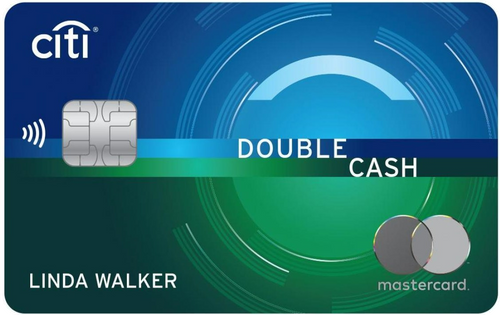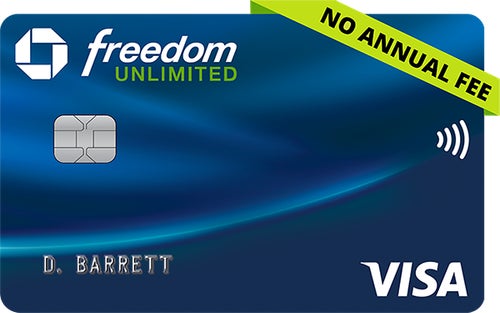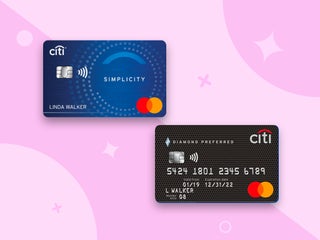Summary
We crunched the numbers for the Citi Double Cash and the Chase Freedom Unlimited to help you decide which one takes the prize for best cash back card.
The content on this page is accurate as of the posting date; however, some of our partner offers may have expired. Please review our list of best credit cards, or use our CardMatch™ tool to find cards matched to your needs.
In the showdown between the Citi® Double Cash Card and the Chase Freedom Unlimited, how do you decide which takes the prize for best cash back credit card?
When you compare the Citi Double Cash card’s flat rate of up to 2% cash back (1% when you buy, 1% as you pay off your purchases) to the Chase Freedom Unlimited’s 1.5% cash back rate on general purchases, the Citi Double Cash card appears to be the clear winner.
But wait: You also need to figure in the Chase Freedom Unlimited’s ongoing bonus cash back categories, as well as its sign-up bonus (a feature completely missing from the Double Cash card).
Based on our estimates, the Double Cash and Freedom Unlimited cards are neck and neck in terms of ongoing value, but the best fit will ultimately depend on your spending habits and how you want to redeem your rewards. While the Double Cash is great for fans of no-hassle cash back, the Freedom Unlimited makes the most sense for foodies and frequent travelers – especially if you pair it with other Chase credit cards with Ultimate Rewards to maximize the value of your points.
Citi Double Cash vs. Chase Freedom Unlimited
 |  | |
| Rewards rate | Up to 2% cash back:
|
|
| Sign-up bonus | None | An additional 1.5% cash back on everything you buy (on up to $20,000 spent in the first year) |
| Annual fee | $0 | $0 |
| Average earnings over three years ($15,900 annual spend, includes sign-up bonus) | $318 | $433 |
| Pros |
|
|
| Cons |
|
|
| Who should get this card? |
|
|
Citi Double Cash overview
The Citi Double Cash is the original 2% cash back card. You get 1% cash back when you make a purchase and another 1% back when you pay off your purchase. While a few similar cards have recently entered the market, none of them beat the simplicity and ease of the Citi Double Cash.
The card doesn’t require you to have a bank account with Citi or to deposit your rewards into a Citi bank account – once you hit the $25 minimum redemption threshold, you can redeem your cash back as a statement credit, check, gift card or deposit into a checking or savings account.
Upsides: Simplicity and a 2% cash back rate that few cards can match, even cards with category bonuses. You earn the same rate on every purchase, so there’s no need to keep track of bonus categories or worry about enrolling in categories each quarter.
Downsides: You must pay your bill on time to earn the full 2% rate. You can’t redeem your cash back until you hit the $25 redemption threshold, although it’s a pretty reasonable threshold. The Citi Double Cash also doesn’t have a sign-up bonus, which is a common feature on the top rewards cards.
Chase Freedom Unlimited overview
Like the Citi Double Cash, the Chase Freedom Unlimited offers a higher-than-average cash back rate on general purchases, although it’s slightly less impressive: 1.5%, to be exact. That said, unlike the Citi Double Cash, the Freedom Unlimited also offers bonus rewards in several spending categories: You’ll earn 5% back on travel purchased through the Chase Ultimate Rewards portal and on Lyft purchases (through March 2025) and 3% back on dining and drugstore purchases.
As an introductory offer, you’ll get an additional 1.5% cash back on everything you buy (on up to $20,000 spent in your first year). This is a generous bonus that stacks up on top of the card’s regular rewards rates.
Probably its best feature, the Freedom Unlimited card earns Ultimate Rewards points, which you can transfer to certain other Chase cards, such as the Chase Sapphire Preferred Card, and redeem for travel rewards to get better point values.
Upsides: Cash back variety – you earn a solid cash back rate on general purchases, as well as bonus cash back in popular categories. You can redeem any number of points at any time for a variety of options, including cash back, gift cards, travel and Amazon.com merchandise. The card’s bonus makes it valuable in the first year. Also, the ability to transfer points to other Chase Ultimate Rewards cards means you can get more than 1 cent of value out of each point.
Downsides: The card’s bonus categories may not line up with your spending habits. If that’s the case, the 1.5% general cash back rate isn’t as impressive.
Best for first-year cardholders: Chase Freedom Unlimited card
Thanks to its introductory offer, the Chase Freedom Unlimited is by far the best card for new cardholders.
Based on the average cardholder spend of about $15,900 per year, you would get around $238 on top of your normal cash back with the overarching 1.5 percent rewards boost in your first year with the card. Further, considering the Bureau of Labor Statistics’ Consumer Expenditures report data, you’d also earn $353 in annual ongoing value.
This easily beats what you’d earn with the Citi Double Cash card, despite the Double Cash card’s higher cash back rate on general purchases.
Average cash back in first year ($15,900 spend)
| Citi Double Cash | Chase Freedom Unlimited |
| 2% x $15,900 = $318 | 1.5% x $15,900 + $353 = $591 |
Best for cash back on general purchases: Citi Double Cash card
Based on the average person’s spending habits, the Freedom Unlimited carries an average rewards rate of around 2% back, matching the Double Cash card’s flat rate on all purchases. But if you don’t spend much on dining, drugstore purchases or travel (Ultimate Rewards bookings, specifically), the Double Cash card will win out easily.
Indeed, given how uncertain travel still is, you may be better off using the Double Cash card for general purchases and pairing it with another card that earns bonus rewards in a category that better lines up with your current spending habits.
For example, if you spend heavily on groceries, you can pair the Double Cash card with the Blue Cash Preferred® Card from American Express – a great grocery card that earns 6% cash back on U.S. supermarket purchases (on up to $6,000 in purchases annually, then 1%) and select U.S. streaming services, plus 3% on transit and U.S. gas station purchases.
If you use the Blue Cash Preferred card for your U.S. supermarket, select streaming subscription, transit and gas station purchases and swap in the Citi Double Cash card to earn 2% on the rest of your purchases, you can seriously boost your cash back rate.
We estimate that the average cardholder can earn a rewards rate of 3.19% per year with the two cards combined, for an average of $412 cash back when you subtract the Blue Cash Preferred card’s $95 annual fee. That’s $92 or $94 more than you’d earn with the Freedom Unlimited after the first year or with the Citi Double Cash card on its own, respectively.
Scenario: Pair Blue Cash Preferred Card from American Express with Citi Double Cash ($15,900 yearly spend)
| Cash back rates | Average rewards rate | Cash back earned | Total minus ongoing annual fee | |
| 3.19% | $507 | $412 | |
Best for pairing with Chase cards: The Chase Freedom Unlimited card
That said, if you’re looking for the highest rewards value, your best option is to pair the Chase Freedom Unlimited card with other cards that earn Chase Ultimate Rewards points.
Chase Ultimate Rewards points are some of the most valuable and versatile rewards points. You can transfer them to certain Ultimate Rewards cards – such as the Chase Sapphire Preferred and the Chase Sapphire Reserve – where you have a plethora of options to redeem your points for travel rewards. You can redeem them for statement credits at a value of 1 cent per point, redeem them for travel through the Chase Ultimate Rewards portal to earn a 25% to 50% bonus, or transfer them to one of Chase’s many travel partners to get even higher point values.
The table below shows the value of combining the Chase Freedom Unlimited with the Chase Freedom Flex and Chase Sapphire Reserve. If you max out the Freedom Flex’s rotating bonus categories and your spending matches that of the average consumer on other purchases, you can earn around 50,295 Ultimate Rewards points per year – worth anywhere from $500 to $800 or more, depending on how you redeem them.
Scenario: Combine three Ultimate Rewards cards
| Cash back rates | Average rewards rate | Estimated points/year | Sample redemptions: estimated value | |
| 2.05% | 50,295 |
| |
Bottom line
As you can see, the Chase Freedom Unlimited is the obvious choice for travelers who want to maximize their Ultimate Rewards earnings. But the Citi Double Cash card is also a great cash back option, both as a stand-alone card and for pairing with bonus category cards. If you’re still not sure which card is best for you, check out our comparisons of the Discover it cards and the Capital One Venture Cash Rewards Credit Card versus the Capital One VentureOne Cash Rewards Credit Card.
The editorial content below is based solely on the objective assessment of our writers and is not driven by advertising dollars. However, we do receive compensation when you click on links to products from our partners. Learn more about our advertising policy
Editorial Disclaimer
The editorial content on this page is based solely on the objective assessment of our writers and is not driven by advertising dollars. It has not been provided or commissioned by the credit card issuers. However, we may receive compensation when you click on links to products from our partners.





